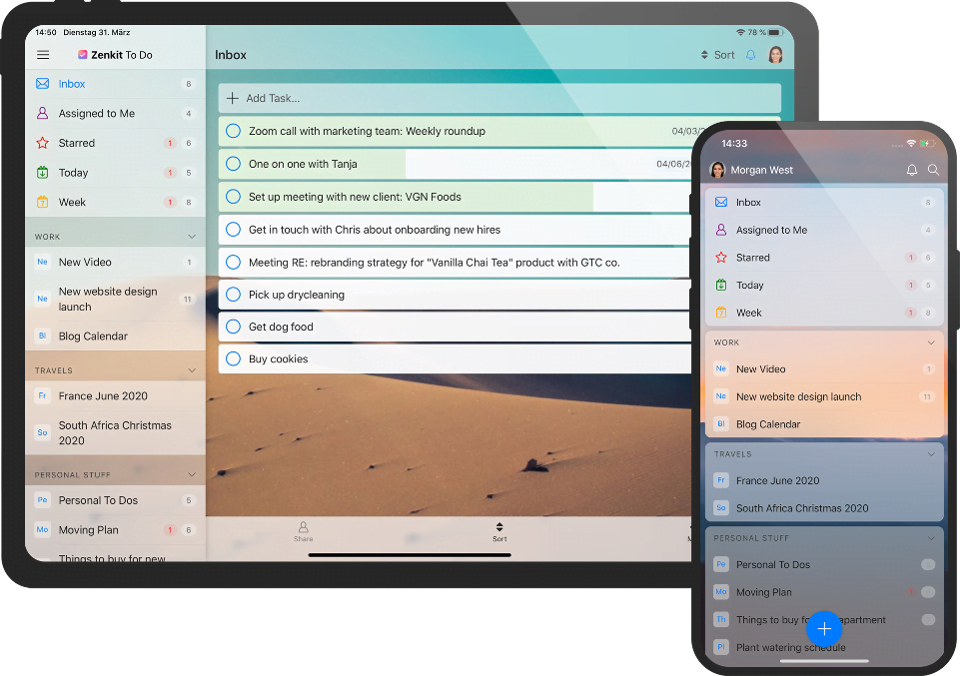Zenkit_To_Do_iPad-Inbox-iPhone-Home
If you use organizational tools to keep your digital life from spiraling into madness, then you know that Wunderlist was previously one of the best tools on the market for creating to-do lists, sharing assignments and keeping a general sense of task-oriented sanity. Microsoft bought Wunderlist back in 2015 and is finally retiring it.
Microsoft kept Wunderlist up and running much longer than it should have, but it used that time to bolster its own To Do app, which it announced late last year. There are a lot of similarities between the new Microsoft To Do app and Wunderlist, which makes sense since the Wunderlist team constructed it from the meaty bones of Wunderlist.
Microsoft To Do is not an alternative to Wunderlist, but a replacement. An alternative would be Zenkit launching its own task management tool today, also called To Do. There is even a 1-click import for previous Wunderlist users. It’s either strategic or confusing that both Microsoft and Zenkit have named their task management apps To Do, but there are some advantages to each.
With Microsoft To Do, you get to remain in the Microsoft ecosystem and its integration with other Microsoft apps. Microsoft To Do is the task management software you’ll want to use if the company you are working for makes you use it. Meanwhile, Zenkit is a much more robust project and task management application, now with all the features offered by Wunderlist and usable on on MacOS and Linux desktops — not just Windows.
Zenkit itself is a complex, yet flexible and able tool that fits any workflow. A lot of features would be redundant for simple task management, hence the separate-but-integrated Zenkit To Do app. Features include: Smart lists, list sharing, file attachments, comments, reminders, folders, subtasks, offline support, dark mode and user @mentions. Zenkit is also Enterprise ready, including groups, roles, SAML, SCIM and auditing. There is also seamless integration with Zenkit Kanban and Gantt.
“We deliberately built Zenkit To Do to look and feel similar to Wunderlist,” Zenkit CEO, Martin Welker explained in a press release. “Wunderlist’s departure is a huge loss for millions of users who’ve built their lives around it. Many have expressed disappointment at the current alternatives, none of which are quite the same. We want to fill that gap. We knew we had the infrastructure to handle such a quick turnaround, and had already planned it for 2020, so we thought… why not now?”
Now makes more sense, considering Wunderlist officially shuts down at the end of this month, and this month, as we know — is going to be like no other month we’ve ever experienced. Without getting too far into what we already know, a lot of us need a project and task management tool just to maintain a semblance of humanity, sanity and general organization. With more people working at home and homeschooling, now seems like the perfect time to launch a Wunderlist alternative coincidentally named the same as the Microsoft replacement.
The productivity market is about to have a moment as many of us learn what productivity really means. The void left by Wunderlist is not the black hole it could have been. Between Microsoft To Do and Zenkit To Do, we’ll have plenty to do and know when to do it and how to keep it organized.
